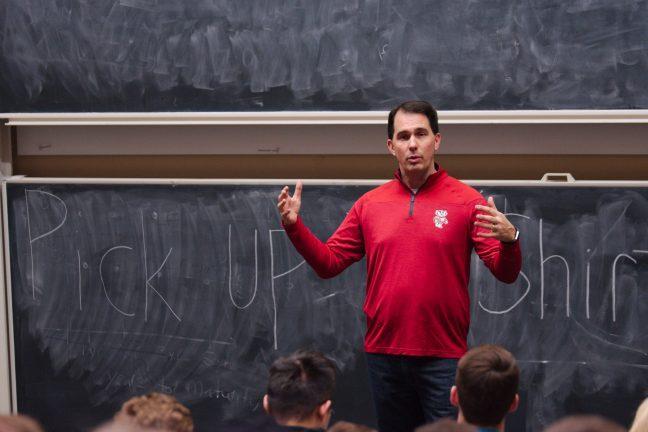There’s a big contrast between the Republican senatorial and Democratic gubernatorial primary fields. A car could fit the number of declared Republican candidates, but the Democrats need a bus. The reason the Democratic field has grown so large is probably the same reason the 2016 Republican field was so large. Generally, the party that holds the White House after eight years is at an electoral disadvantage. History also indicates the new party in charge is handicapped in midterm elections.
Yet Democrats should not get too cozy just yet. Gov. Scott Walker has proven time and time again to be a formidable candidate. This year won’t be any different. And while a crowded field can be a blessing, it could also be a curse.
There is a grand total of fourteen candidates running to obtain the Democratic nomination. For Democratic voters, each candidate brings something to the table. Madison Mayor Paul Soglin is the figurehead of a liberal stronghold and intends to be the Bernie Sanders-type candidate of the race. State Superintendent Tony Evers is the only candidate to have won a statewide election. Kathleen Vinehout and Dana Wachs come from rural Wisconsin, while Mahlon Mitchell hails from the largest city and is the only African-American in the race. Andy Gronik has spent his life in the private sector. There are even candidates who seem to have little to offer, like Bob Harlow and Matt Flynn.
Simultaneously, this wide field leaves no clear frontrunner. As of March 1, the only poll conducted has been from Public Policy Polling, back in January. It found Evers ahead with 29 percent. The only other two in the double digits are Vinehout and Soglin, with 11 percent and 10 percent, respectively. While Evers has a nice lead, it is critical for any reader of the poll to know that it his campaign paid for it. Candidates who are polling far less will be waiting for independent polling, especially from the respected Marquette Law School poll.
In the meantime, Democrats who are excited this year should get ready for a wild ride of fluctuations in momentum and inexorable mudslinging. A ton of resources are going to be spent on the primary. That allows Walker to spend this time rallying his conservative base and growing his campaign war chest, already at $4.2 million.
Some Democrats have hit six figures. Despite only being a former Democratic Party of Wisconsin chairman, Flynn raised $351,000. Even though he’s at only 5 percent according to the Public Policy poll, he can begin spending money on ads and campaign infrastructure. While she is in second place, Vinehout has only raised $83,000. Evers might feel secure with raising $312,000 for his campaign, but Mitchell has raised almost the same.
The poll shows Gronik at only 2 percent, but that’s because he is virtually unknown. He’s wealthy and has raised the most cash, but most of his $554,000 came from his personal wealth. His economic status allows him to invest heavily in the campaign with ease. Since Soglin made a recent announcement, we do not have his numbers.
This is a far cry from the 2014 Democratic primary for governor, in which there were only two candidates. It also means there’s going to be a battle royal to get the top of the field.
A chaotic primary will lead the Democrats to forget something that is needed for electoral success: Building a coalition that can attract their base and centrists. The fighting in the primary is undoubtedly going to consist of every candidate declaring they’re the true liberal and the rest are not. This is all to Walker’s benefit, who can tout his reformist record as governor and not worry about primary threats of his own.
The conservative base of Wisconsin, rooted in Waukesha, Ozaukee and Washington counties, will remain enthusiastic about Walker and mobilize for 2018. According to the that latest fundraising report, the Wisconsin GOP has $2 million on hand, giving them plenty of resources to build campaign infrastructure in imperative swing counties like Racine and Winnebago. Lt. Gov. Rebecca Kleefisch has another $1.4 million. After so much mudslinging, will any Democratic primary survivor have nearly enough resources to campaign effectively? As of now, it doesn’t look like it.
With a big battle on the way, the vultures are about to fly around, waiting for the carcasses of defeated candidates. But is the last Democrat standing on a path to victory? Only time can tell.
John Graber (jgraber3@wisc.edu) is a senior majoring in history and political science.


